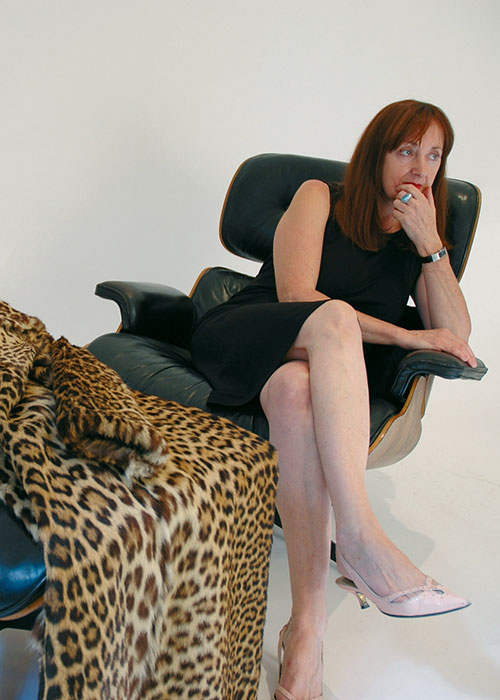Prototype of a standard clock, designed by Richard Meier,

1996, for Acerbis International, Italy, white lacquered wood, high-precision quartz movement, height 195 cm, 35 x 35 cm. (DRAX)
Prototype of a limited series produced between 1996 and 2003.
“Referencing the compositional attitude of de Stijl, this two-meter-high standing clock is an assemblage of orthogonally positioned planes of divergent forms and dimensions. As in the paintings of Mondrian and van Doesburg, a dynamic equilibrium disciplines the figure’s asymmetry. Its elements are composed to effect a visual travelling about its “front” elevation, which echoes the clockwise movement of the time-telling mechanism. Sculptured for viewing from all sides, the standing clock is best positioned as a free-standing object so as to the reveal its changing shapes as one circles it in space. The uniformly white, matte lacquer finish allows for an uninterrupted play of light and shadow on the clock’s surfaces, and focuses attention on its composition and function.” (Richard Meier)
With a certificate and photocopy of the design drawing.
Provenance: Acerbis Archives, Italy
Esperta: Dr. Gerti Draxler
 Dr. Gerti Draxler
Dr. Gerti Draxler
+43-1-515 60-226
gerti.draxler@dorotheum.at
20.05.2015 - 18:00
- Stima:
-
EUR 9.000,- a EUR 13.000,-
Prototype of a standard clock, designed by Richard Meier,
1996, for Acerbis International, Italy, white lacquered wood, high-precision quartz movement, height 195 cm, 35 x 35 cm. (DRAX)
Prototype of a limited series produced between 1996 and 2003.
“Referencing the compositional attitude of de Stijl, this two-meter-high standing clock is an assemblage of orthogonally positioned planes of divergent forms and dimensions. As in the paintings of Mondrian and van Doesburg, a dynamic equilibrium disciplines the figure’s asymmetry. Its elements are composed to effect a visual travelling about its “front” elevation, which echoes the clockwise movement of the time-telling mechanism. Sculptured for viewing from all sides, the standing clock is best positioned as a free-standing object so as to the reveal its changing shapes as one circles it in space. The uniformly white, matte lacquer finish allows for an uninterrupted play of light and shadow on the clock’s surfaces, and focuses attention on its composition and function.” (Richard Meier)
With a certificate and photocopy of the design drawing.
Provenance: Acerbis Archives, Italy
Esperta: Dr. Gerti Draxler
 Dr. Gerti Draxler
Dr. Gerti Draxler
+43-1-515 60-226
gerti.draxler@dorotheum.at
|
Hotline dell'acquirente
lun-ven: 10.00 - 17.00
kundendienst@dorotheum.at +43 1 515 60 200 |
| Asta: | Design |
| Tipo d'asta: | Asta in sala |
| Data: | 20.05.2015 - 18:00 |
| Luogo dell'asta: | Wien | Palais Dorotheum |
| Esposizione: | 13.05. - 20.05.2015 |
